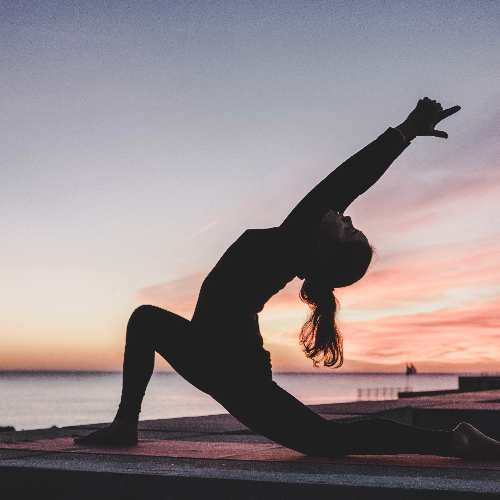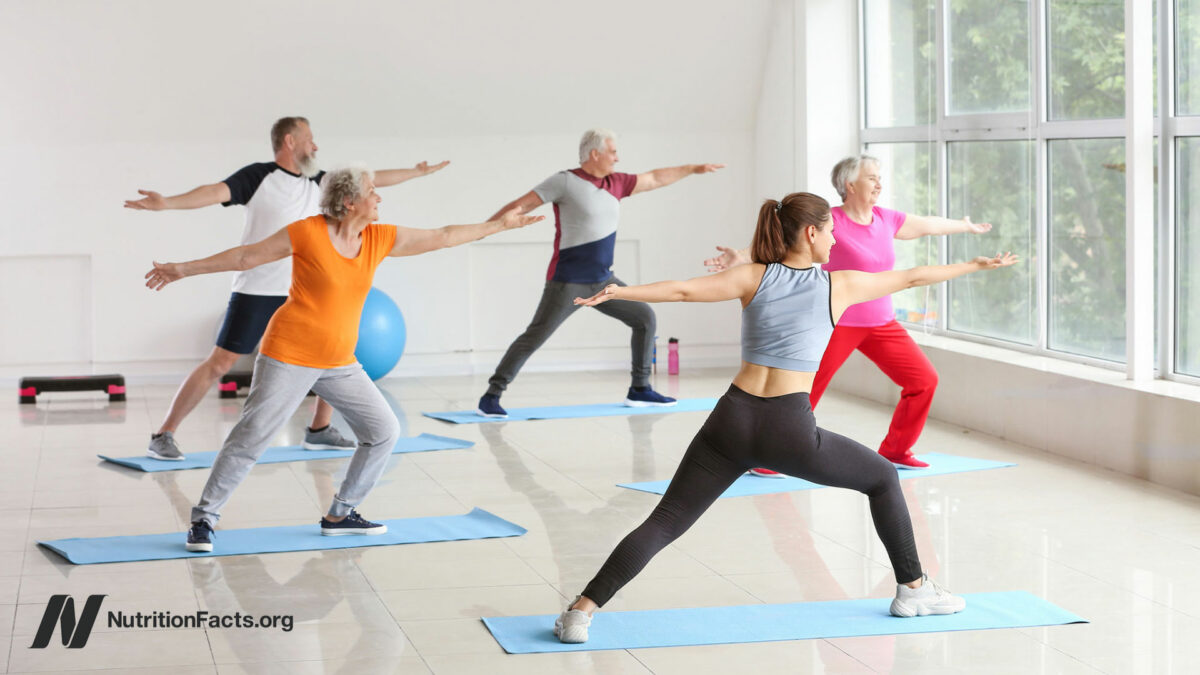
Yoga
Practiced by as many as 20 million Americans every year, yoga in the United States is comprised mainly of body postures, breathing exercises, and meditation. A meta-analysis of randomized controlled trials found that yoga interventions can lower cortisol levels, but does this translate into weight loss? Practicing yoga for four or more years has been associated with less weight gain over time, but yoga practitioners also tend to exercise twice as much in general and eat more healthful diets (for example, 45 percent higher consumption of fruits and vegetables).
There are randomized controlled yoga trials showing weight loss, but they’re often in comparison to control groups who did nothing. Indeed, compared to no changes in physical activity, doing about 30 hours of yoga has been shown to lead to about five pounds of weight loss and an inch off the waist.
Yoga was compared head-to-head to resistance exercise and walking for weight loss. Doing 36 hours of resistance training led to a 1 percent drop in body fat, compared to the sedentary control group, and doing the same amount of yoga led to the same 1 percent drop. In another study, walking at least 90 minutes a day on a plant-based diet also led to similar amounts of weight loss compared to swapping in the same amount of yoga—about five pounds and an inch off the waist in 15 days. The walking group were told to walk at their own pace, which ended up being more of a leisurely stroll, but that matched the metabolic cost of most yoga, which is classified by American College of Sports Medicine criteria as a light-intensity physical activity.
What about Bikram—or hot—yoga, practiced at a humid 100°F and purported to burn a thousand calories a session? That’s a bit of a stretch. When put to the test, calorie expenditure during hot yoga was no more fat-burning than room-temperature yoga. Overall, yoga doesn’t appear to have any special weight-reducing benefits, but the best form of exercise is the one you’ll actually do, so if you enjoy it, go for it. Namaste.
The information on this page has been compiled from Dr. Greger’s research. Sources for each video listed can be found by going to the video’s page and clicking on the Sources Cited tab. References may also be found at the back of his books.
Image Credit: Unsplash
Popular Videos for Yoga

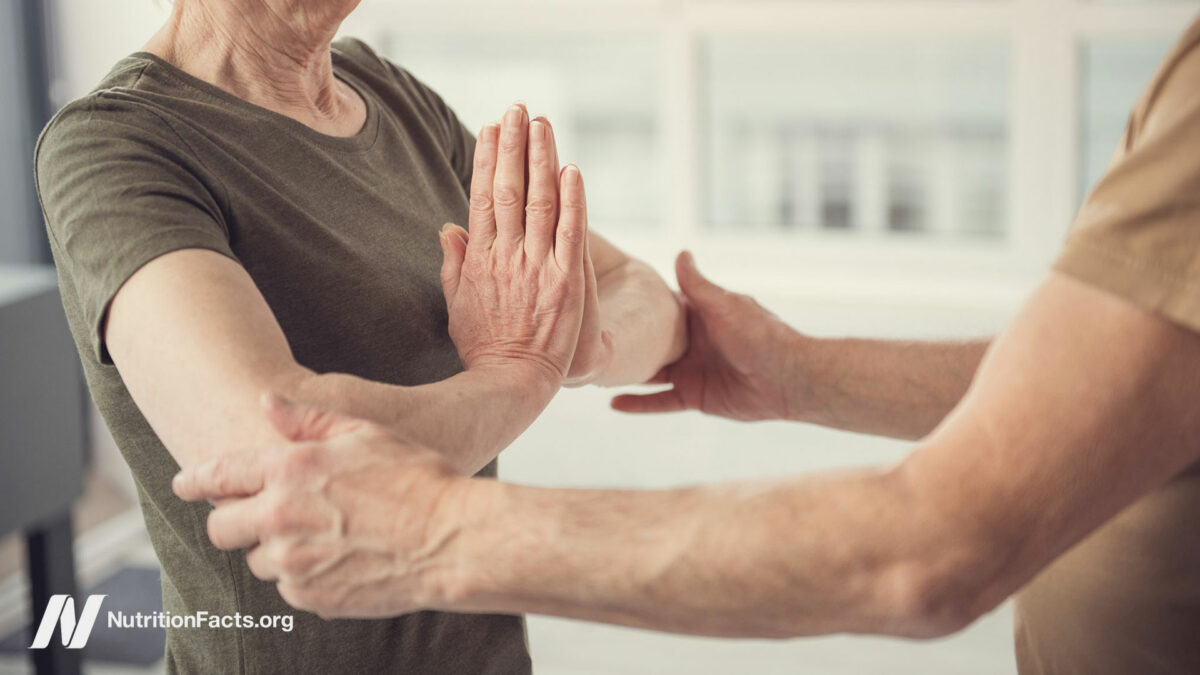
Yoga Put to the Test for Headaches, Diabetes, Osteoarthritis, and the Elderly
What happens when real yoga is compared to sham yoga?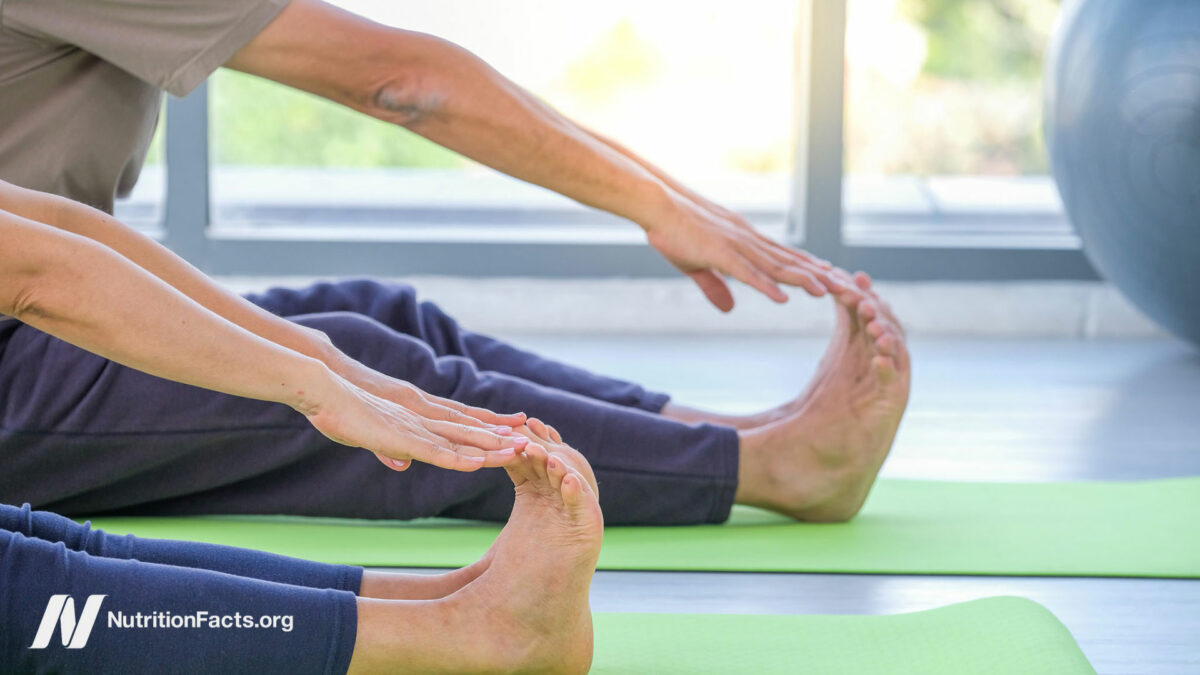
Yoga Put to the Test for IBS, Inflammatory Bowel, Menopause, and Osteoporosis
A study using sham acupuncture underscores the necessity of controlling for expectancy effects.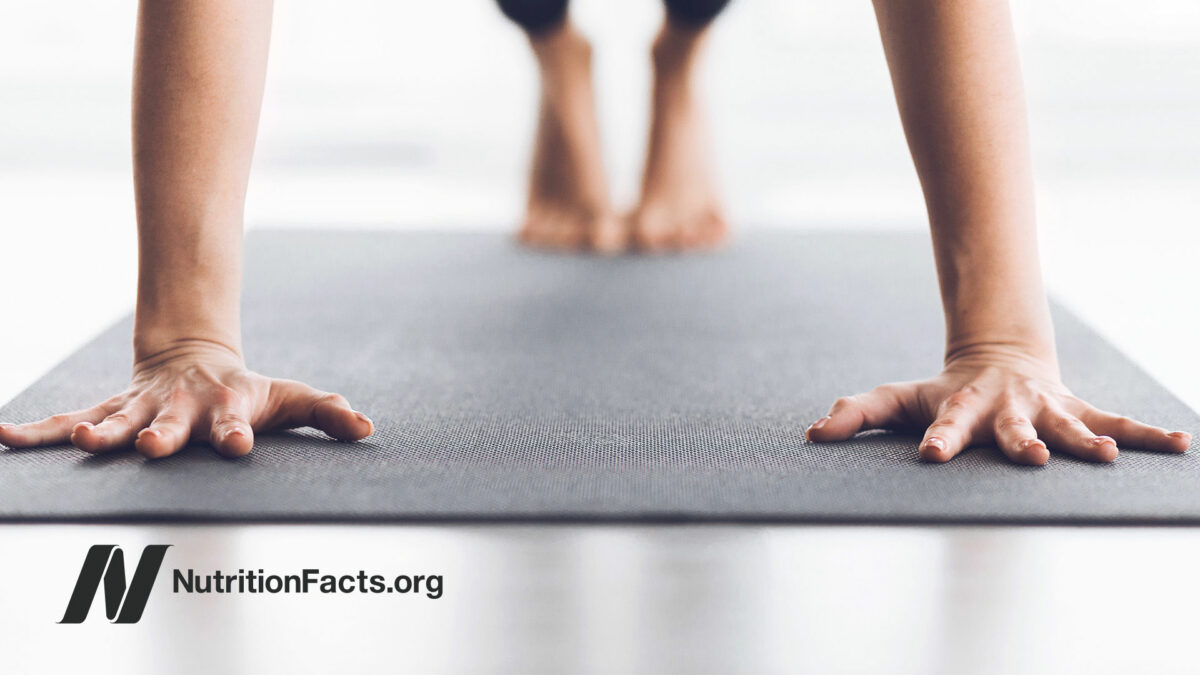
How to Prove Whether Yoga Has Special Health Benefits
Yoga practitioners are healthier, but does practicing yoga lead to good health, or does good...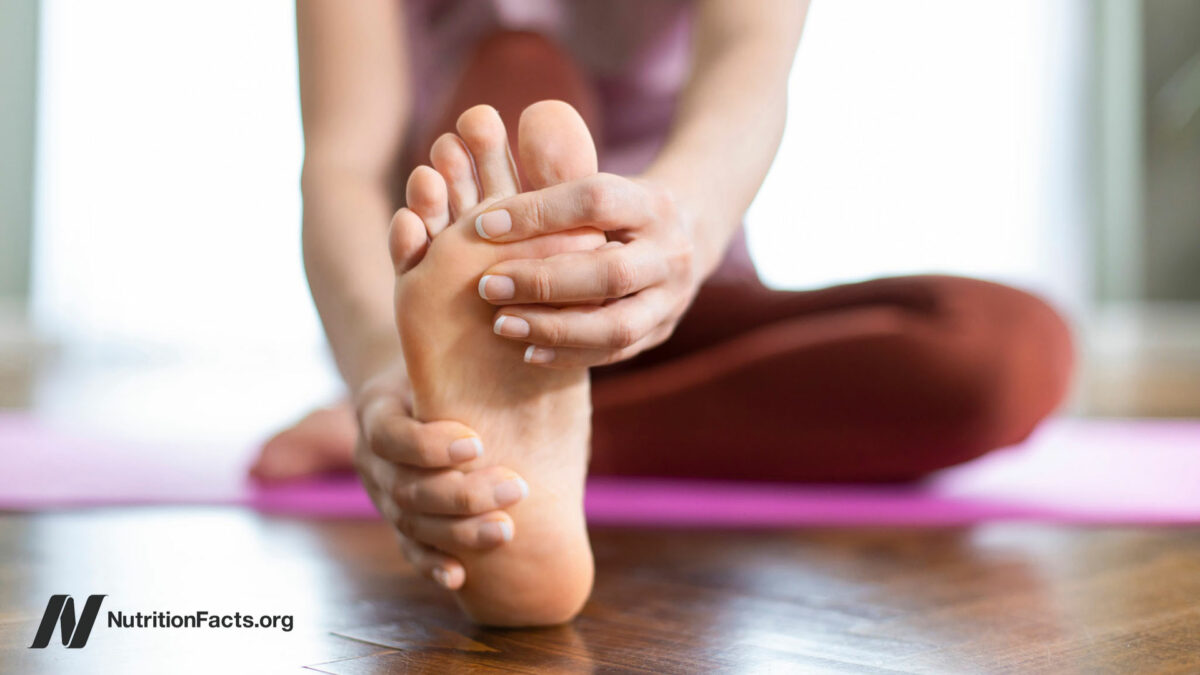
The Side Effects of Yoga
What is the rate of yoga injuries compared to other activities?All Videos for Yoga
-

The Side Effects of Yoga
What is the rate of yoga injuries compared to other activities?
-

Yoga Put to the Test for IBS, Inflammatory Bowel, Menopause, and Osteoporosis
A study using sham acupuncture underscores the necessity of controlling for expectancy effects.
-

Yoga Put to the Test for Depression, Anxiety, and Urinary Incontinence
Which of the 50 different yoga styles have been shown to be best?
-

Yoga Put to the Test for Headaches, Diabetes, Osteoarthritis, and the Elderly
What happens when real yoga is compared to sham yoga?
-

Yoga Put to the Test for MS, Back Pain, Neck Pain, Insomnia, and Breast Cancer
Is yoga better than other types of exercise, better than nothing but similar to other physical activity, or not beneficial even when it’s compared to doing nothing at all?
-

How to Prove Whether Yoga Has Special Health Benefits
Yoga practitioners are healthier, but does practicing yoga lead to good health, or does good health lead to practicing yoga?
